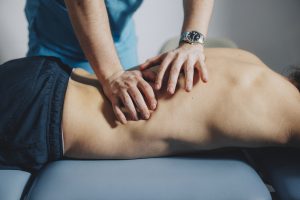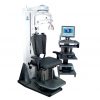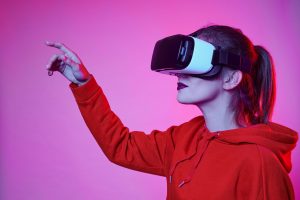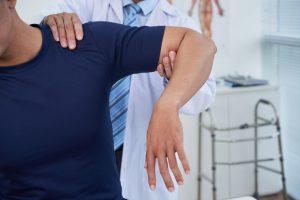
Soft Tissue Techniques and Joint Manipulation for Low Back Pain
Treatment GuidelinesA comparison between soft tissue mobilization and joint mobilization/manipulation techniques for treating low back pain. I'll cover clinical data on these techniques for low back pain, specific techniques, indications, and contraindications.
As a clinician, you are no doubt aware of the back pain epidemic that has been crippling our healthcare system for decades.
There are tons of articles out there detailing the causes of low back pain as well as many of the primary care initiatives that may curb the issue. For any interested readers, the CDC provides detailed information on the problem at hand.
However, the focus of this article is not to rehash the statistics related to back pain. There are many excellent articles covering that topic already.
Nor is my goal to demonize certain treatments that professionals across various fields have had success with in the past. In fact, I firmly believe that in-fighting between Chiropractors, PTs, Massage Therapists, and other health professionals does a disservice to patients. We should all be working together to effectively treat patients in order to create a healthier world.
Specifically, my aim in writing this article is to provide a comparison between soft tissue mobilization (STM) and joint mobilization/manipulation techniques for treating low back pain. A quick outline of what I’ll cover:
- What the evidence says about these treatment strategies with regard to back pain.
- Some of the different techniques within the broad categories of joint manipulation and soft tissue mobilization.
- A few indications and contraindications for the use of each treatment.
*Note: Every state, territory, country, and region has different practice acts / laws that dictate who can legally perform certain treatments. Always be sure that you are acting within your scope of practice when providing treatment for low back pain or any other condition.
Soft Tissue Mobilization for LBP
Many providers swear by soft tissue treatments to address low back pain. Let’s take a look at STM for LBP in terms of the popular techniques, evidence for or against it, and the applicable indications / contraindications.
STM Techniques for Treating LBP
As is the case with nearly every form of treatment, soft tissue mobilization encompasses a variety of different techniques. Each of these techniques accomplishes slightly different treatment outcomes. Below, I’ll briefly describe two of the common types of soft tissue mobilization for LBP.
Deep Tissue Massage
Deep pressure massages, such as friction massages, are often favored by clinicians for the treatment of chronic pain. Generally, this technique can treat pathologies affecting tendinous or ligamentous structures. However, there are proponents of the treatment for a wide variety of ailments, such as low back pain.
Effleurage
Effleurage massage techniques use broad, gentle strokes. For those unfamiliar with massage therapy, this is often the quintessential “relaxing” massage.
Evidence for the Use of STM in Treating LBP
There is some weak evidence that supports the use of soft tissue mobilization for LBP, both for pain relief and improved daily function. However, it’s difficult to determine whether the results were due to the massage treatment itself or several confounding variables.
For this reason, it is always best to proceed with caution and be willing to change course based on the patient’s response to STM intervention.
STM Contraindications for LBP
Perhaps one of the most positive benefits of soft tissue mobilization techniques is that there are very few contraindications. Truthfully, the contraindications for STM are fairly intuitive.
For instance, whether you perform the treatment with your hands or an instrument, you should avoid areas with open wounds, unstable fractures, or active cancer.
Because of the relative safety and effectiveness of soft tissue mobilization, it applies to many different conditions. Especially in relation to low back pain, STM can be a great treatment in combination with exercise or other modes.
Furthermore, some patients are unable / unwilling to receive therapies they perceive as “aggressive.” In this case, STM can serve as an alternative that may provide some benefits.
Joint Mobilization / Manipulation for LBP
In practice, the terms mobilization and manipulation can often be used interchangeably. However, for the purposes of clarity in this post, when I’m using the term mobilization, I’m referring to non-thrust treatments. Alternatively, when I’m using the term manipulation, I’m referring to thrust techniques.
Mobilization / Manipulation Techniques for LBP
Clinicians who use joint mobilization and manipulation techniques in their practice may follow one or more of the popular schools of thought on the issue. Some of the most well-known techniques are the Maitland, Kaltenborn, and Mulligan methods.
However, some clinicians may feel that their particular technique doesn’t necessarily fall into any of these categories. They may describe their current practice simply as a general mobilization or manipulation technique.
General Mobilization / Manipulation Techniques
By mobilizing or manipulating a joint, clinicians can help patients overcome pain, stiffness, and other issues.
Thrust techniques, in general, involve taking a joint to the end of a range of motion and performing a quick push that may or may not result in a cavitation. Afterward, patients usually feel relief of pain and will often demonstrate improved range of motion.
Maitland
Maitland joint mobilization techniques include five different grades of oscillatory mobilization ranging from small amplitude mobilization at the beginning of a joint range of motion (Grade I) to a high velocity, low amplitude thrust technique at end range (Grade V).
Kaltenborn
Kaltenborn mobilizations are based on a progressive (three stage) scale in which the clinician performs a sustained joint mobilization with the goal of achieving various treatment outcomes.
Mulligan
Mulligan mobilizations are sometimes referred to as Mobilizations with Movement or MWM. These treatments are performed while the patient actively moves through a range of motion.
Mobilization / Manipulation Evidence for LBP
The evidence for spinal manipulation for LBP is very compelling. The ideal patients with LBP who seems to benefit most from manipulation typically have the following profile:
- Pain that does not radiate past the knee
- Recent onset of symptoms
- Low level of fear avoidance per FABQ
- Hypomobility in the lumbar spine
- Limited hip internal rotation ROM
There are other criteria that may be considered when triaging a patient with LBP, but this treatment based classification system consistently yields good results.
Mobilization/Manipulation Indications and Contraindications for LBP
Mobilization and manipulation techniques are generally safe, especially for the lumbar spine. However, some of the contraindications include:
- Cancer
- Advanced osteoporosis
- Recent fracture
Much like STM, mobilization and manipulation techniques tend to be very safe for most patients. However, in terms of research, the evidence favors the use of manipulation/mobilization over STM for many cases of low back pain.
Conclusion
LBP is a tricky problem to address. There are many different issues that can cause the ailment and just as many schools of thought on how best to treat it.
As health professionals, we have a duty to help our patients to the best of our abilities. However, if a patient is unwilling or unable to undergo what we consider the best treatment for their condition, we need to have multiple options in our toolbelt.
When compared head to head, manipulation/mobilization techniques are a better option for many cases of low back pain. However, soft tissue mobilization techniques will always have their place in certain treatment plans and should never be discounted outright.
Bennett Richardson, PT, DPT, CSCS
Bennett Richardson, PT, DPT, CSCS is a physical therapist and writer. He is the owner of Richardson PT LLC, a mobile, cash-based physical therapy service out of Pittsburgh, PA. Ben is passionate about many health-related topics including weight loss and athletic performance. To get in touch with Ben, visit www.richardsonpt.com
References
- Centers for Disease Control and Prevention. (2022, January 31). Acute Low Back Pain. https://www.scribbr.com/apa-examples/website/
- Pitsillides, A., & Stasinopoulos, D. (2019). Cyriax Friction Massage-Suggestions for Improvements. Medicina (Kaunas, Lithuania), 55(5), 185. https://doi.org/10.3390/medicina55050185
- Kumar, S., Beaton, K., & Hughes, T. (2013). The effectiveness of massage therapy for the treatment of nonspecific low back pain: a systematic review of systematic reviews. International journal of general medicine, 6, 733–741. https://doi.org/10.2147/IJGM.S50243
- Cheatham, S. W., Baker, R., & Kreiswirth, E. (2019). INSTRUMENT ASSISTED SOFT-TISSUE MOBILIZATION: A COMMENTARY ON CLINICAL PRACTICE GUIDELINES FOR REHABILITATION PROFESSIONALS. International journal of sports physical therapy, 14(4), 670–682.
- Pettman E. (2007). A history of manipulative therapy. The Journal of manual & manipulative therapy, 15(3), 165–174. https://doi.org/10.1179/106698107790819873
- Muhammad Alrwaily, Michael Timko, Michael Schneider, Joel Stevans, Christopher Bise, Karthik Hariharan, Anthony Delitto, Treatment-Based Classification System for Low Back Pain: Revision and Update, Physical Therapy, Volume 96, Issue 7, 1 July 2016, Pages 1057–1066, https://doi.org/10.2522/ptj.20150345
- Schneider, M., Haas, M., Glick, R., Stevans, J., & Landsittel, D. (2015). Comparison of spinal manipulation methods and usual medical care for acute and subacute low back pain: a randomized clinical trial. Spine, 40(4), 209–217. https://doi.org/10.1097/BRS.0000000000000724





